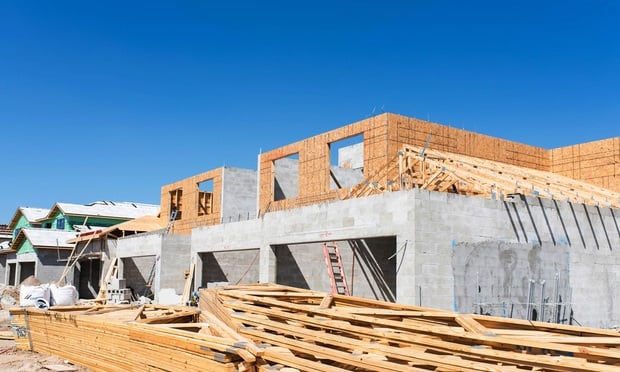SAN FRANCISCO-While near-term uncertainty in the multifamily sector pervaded conversations during the eighth annual PCBC Multifamily Trends conference on Wednesday, the industry remains confident in the long-term prospects of the asset class, fueled by strong demographics and continued investor interest in core, urban infill properties.
“This is the worst, most pervasive recession…I have ever experienced in my career,” explained Geoffrey Stack, chairman of the event, and managing director and principal of Irvine, CA-based Sares-Regis Group. During a panel at the Moscone Center in downtown San Francisco entitled, “When and What to Buy, Build or Sell – Experience Talks,” moderated by ALM’s Michael Desiato, Stack said he has witnessed five downturns throughout his career.
Unlike past recessions, the latest downturn was a financial markets meltdown that impacted the global economy, explained Asieh Mansour, chief economist and strategist for San Francisco-based RREEF, during her economic forecast. “The massive credit crunch is not only impacting the real estate asset class, but every asset class,” noting the capital-intensive nature of the CRE industry.
“The credit crunch is easing, at least in the US,” said Mansour. “There is some good news out there, despite what’s happening with the sovereign debt crisis in Europe.” Businesses have started hiring again, although not at the pace hoped for given the volume of job losses in the US. The US manufacturing sector is “on the tear” and worker productivity levels remain at an all-time high. “It’s fair to say we have turned the corner,” she said. However, Mansour expressed concern over the inability of small businesses in the United States to receive loans for operations due to still-tight lending requirements.
“Consumer spending has rebounded but will not propel growth,” said Hessam Nadji, managing director, research services in the Walnut Creek, CA office of Marcus & Millichap, “Corporate spending has to lead this recovery and companies are hoarding cash because confidence is still shaky.”
Consumer confidence is trending positive, he added but Corporate America is still hoarding cash due to a lack of confidence in the economy and capital markets.
Apartment fundamentals improved modestly in several major markets across the US during the first half of 2010, Nadji added. “Renter household growth projections are strong for the 2011-2015 period,” he said, “and multifamily permitting remains still incredibly low,” particularly in high-barrier-to-entry urban markets.
“Rental starts have fallen off the table,” said Clyde Holland, CEO of Holland Partners Group in Vancouver, WA, during a panel he moderated entitled, “Capital Markets and Apartment Investment Strategy.” The paucity of new multifamily starts has set a post-World War II low. “We see this setting up a repaid recovery in many (western) markets from a rental-growth perspective.”
The top three markets, which Holland selected based on metrics for demand from Gen Yers and prospects for economic growth, are Washington, DC, Seattle and Denver.
Approximately 2.2 million people aged 18 to 34 currently living with their parents during college will fuel demand for apartments, Nadji noted. “Pent-up demand is starting to get released into the market.”
So far this year, effective rent growth has increased on average 2%, said Ronald Johnsey, president of Dallas-based Axiometrics. In the past two quarters, there have been low lease turnover rates and fewer move-outs to single-family homes. The Northern California markets of San Jose, the East Bay and San Francisco remain among the strongest. In San Jose, Johnsey expects effective rent growth of 14.5% by year-end 2010, an unprecedented figure in the current economic environment.
True momentum, however, in rental growth and occupancies will take shape in 2012, explained Johnsey.
Despite this positive news, uncertainty plagues these short-term fundamental gains. “I’ve never seen so many issues impact your forecast,” Johnsey said of Mansour’s forecast. He cited the Gulf Coast oil spill, sovereign debt crisis, terror attacks and possible fluctuations in oil prices.
Political uncertainty is also a concern among those in the multifamily industry. “The taxation situation is too intense to develop” in this economy, said J. Bradley Forrester, president and CEO of the ConAm Group in San Diego. “Uncertainty is killing us right now.”
Approved and pending Federal legislation will place a strain on the industry, said Douglas Bibby, president of the National Multi Housing Council of Washington, DC. The affect of the carried interest-rate tax, a pending energy bill and the future of the GSEs, will have significant implications on the future of the industry. Republicans generally favor dissolving Fannie Mae and Freddie Mac, which could have dire consequences on the industry if they gain control of the US House of Representatives next year, Bibby shared.
Additional concerns surround sustained job growth in the US. College graduates will incur an average of $40,000 in debt in 2010, and they face incredible obstacles when attempting to enter the workforce, said Nadji.
“We need (to create) jobs that will employ college kids,” said Johnsey, noting that those positions are most likely to open up in the government sector. Expect to see growth in the health and education, manufacturing and financial services sectors as well, noted Mansour.
Recent graduates saddled with debt and struggling to find work in this economy generally relocate to urban areas, even without a job, noted Robert Gray, senior managing director of Rockwood Capital LLC of San Francisco, during a capital markets and investment strategy panel. “Students prefer urban core areas,” Gray noted.
In fact, urban core properties outperform suburban assets on a 10-year basis, citing a chart his firm created tracking rent growth from 2000-2010, according to Johnsey. All of the owners and developers speaking at this year’s conference, said they will only target markets with high barriers to entry. “We don’t spend lots of time in low barrier-to-entry markets,” explained Gray. His firm, Rockwood, for instance, is currently looking at a land acquisition in one of the West Coast markets with the highest barriers to entry: San Francisco.
Brian McAuliffe, managing director, acquisitions for RREEF in Chicago, echoed that when placing equity in projects, his institution identifies class A markets and class A properties, a trend that will likely continue, especially among REITs and institutions, in the coming years.
© Touchpoint Markets, All Rights Reserved. Request academic re-use from www.copyright.com. All other uses, submit a request to [email protected]. For more inforrmation visit Asset & Logo Licensing.







